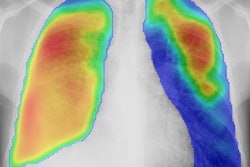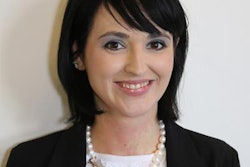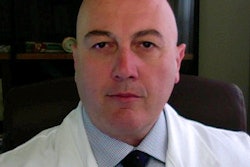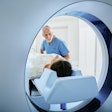
Radiographers must do more to get their faces and names known by attending a wide range of hospital meetings, using social media more effectively, and taking other steps to raise their profile if they're to avoid being the anonymous lead apron in the room, attendees learned at a webinar organized by the British Institute of Radiology (BIR) on 16 September.
Radiography is sometimes the invisible profession, according to Baruch Videan, a locum advanced practice reporting radiographer in the U.K. National Health Service (NHS).
 Social media is a great way to break hierarchical boundaries, said Baruch Videan.
Social media is a great way to break hierarchical boundaries, said Baruch Videan."People still don't know who we are, despite there being 66 million people in the U.K. and the NHS having reported 42.7 million imaging tests in England in the year to March 2018," he said. "We need to big up our profession!"
To do this, he advocates that newly qualified radiographers should engage on all levels, starting by getting to know other health professionals, and not just sticking to radiographers. For instance, he urged radiographers to keep asking other professionals what they can do to help them.
There is much radiographers can do to raise their profile in their free time, especially by engaging with social media, noted Videan, who was a senior radiographer at Central Manchester University Hospitals NHS Foundation Trust until 2018. He is a big fan of Twitter, but he added an important caveat: At all times, radiographers must represent their profession and behave accordingly in the Twittersphere.
Videan declared that Facebook is "so over -- unless you like memes [ideas deemed to be of passing value] or cats." However, he said that social media is an important means of learning about research and audit, protocols, and practice, and it also provides a way to network with other like-minded professionals whom radiographers wouldn't otherwise meet. In this way, it is one of the best ways to break hierarchical boundaries.
Get involved
To stand out from the crowd, it's essential to get involved in hospital life and attend as many meetings as possible, particularly orthopedic trauma list meetings, multidisciplinary team meetings, and discrepancy meetings, he told attendees at the BIR webinar, called "University to Uniform: Making the transition and managing the early years post qualification."
Videan cited four other ways to get better-known:
- Take part in audits and research projects.
- Organize department-, hospital-, and group-wide schemes.
- Contribute to student initiatives.
- Become a representative for the national society, industrial relations, health and safety, or learning.
Overcoming the imposter is how he describes the early days of being a newly qualified radiographer.
"Moving from uni to uniform is an incredibly exciting time but also a difficult transition. Imposter syndrome will raise its head and make you think: I can't do this; I don't know enough about that," he said. "Getting a job in the hospital where you trained may feel like you've hit the ground running; you know the systems, the department, and the people. Yet everything is still different now that you are qualified."
While there are no more exams to take, most aspects of the working day are new, and Videan's advice to radiographers is to acknowledge how they are feeling and to talk to others around them. Once they do this, colleagues will open up and explain how becoming newly qualified is both exciting and challenging at the same time.
What are the challenges?
During the webinar, he addressed some of the topics and themes that many newly qualified health professionals have concerns about and that may not have been discussed during the formal education in university. The aim was to provide some useful hints and tips to make this transitional period easier for those at the start of their career.
Videan advised entry-level radiographers to gain as much experience as possible, while at the same time being proud of what they bring to the table. For example, he considers that new radiographers can spot fractures better than newly qualified doctors.
"Donning the diagnostic radiographer's uniform makes you feel good," noted Videan, who said it is important to find your strengths and weaknesses and that the hunt for perfection in the early days may, in fact, harm progress later on.
He believes that newly qualified radiographers need to challenge the status quo, especially because they're just out of university. He suggested that many senior managers may not have had clinical experience for years, so who better to challenge and question procedures than young radiographers?
When discussing career progression, he recommended setting small goals that are achievable and developing and shadowing mentors -- official ones or otherwise -- though he jests that in some cases, it can be useful to observe a mentor to learn more about how not to behave.
"Be proud of your profession, engage with everyone, and don't try to rush up the career ladder too fast," he concluded. "After all, none of us went into healthcare to get rich. We've got a long career ahead of us -- enjoy the journey."
The full webinar is now available free and on demand via the BIR website.



















